#macropus rufus
Explore tagged Tumblr posts
Text




Various marsupials from the Aussie Walkabout section of Taronga Western Plains Zoo, Dubbo, NSW, January 2025
#photography#nature photography#marsupials#swamp wallaby#Wallabia bicolor#red kangaroo#Macropus rufus#koala#Phascolartos cinereus#there was also an echidna and some quokkas#and red necked wallabies#the devils were in a seperate enclosure and will get their own post
0 notes
Text
It prescribes where red kangaroos have protected refuges, conservation reserves, Country.
"Country: Future Fire, Future Farming" - Bill Gammage and Bruce Pascoe
#book quote#country#bill gammage#bruce pascoe#nonfiction#songlines#red kangaroo#macropus rufus#refuge#conservation#reserves#land management
0 notes
Text
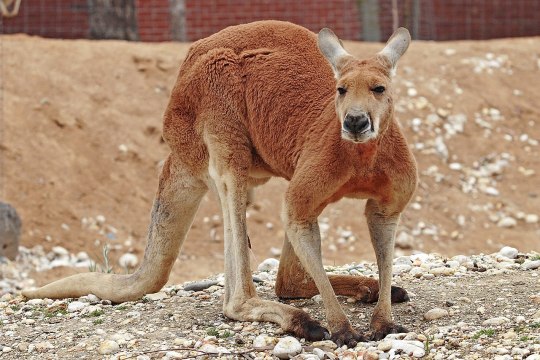
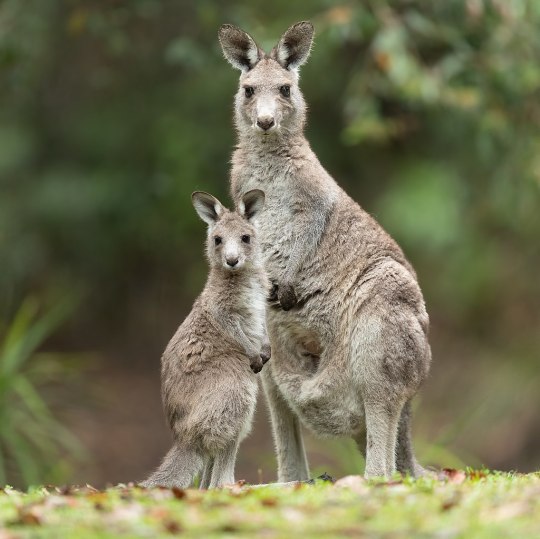


#kangaroo#animal#marsupial#marsupials#animals#red kangaroo#poll#random poll#fun polls#poll time#my polls#tumblr polls#random polls#polls#fandom polls#tumblr poll#polls on tumblr#polls polls polls#polls are fun#Red Kangaroo#Osphranter rufus#Eastern Grey Kangaroo#Macropus giganteus#Western Grey Kangaroo#Macropus fuliginosus#Antilopine Kangaroo#Osphranter antilopinus
10 notes
·
View notes
Text
Kangaroo Trio in the Grasslands
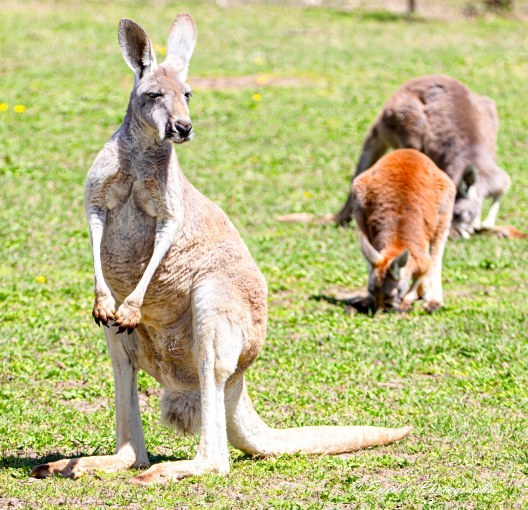
I saw these giant jackrabbits yesterday at the Gone Wild Safari near Pineville, Louisiana.
Just kidding—I know they’re kangaroos. I tried to identify the exact species and concluded that the two closest to me were likely Red Kangaroos (Macropus rufus), while the darker, chocolate-colored one in the back might have been an Eastern Grey Kangaroo (Macropus giganteus).
Unfortunately, I didn’t spot any jackalopes (Lepus antilocapra) during my visit.
I don’t always snap great photos, but when I do, you’ll find them right here:
2 notes
·
View notes
Text
Red Kangaroo: Australia's Iconic Marsupial
Australia is popular for its unique and diverse wildlife, and among its most iconic inhabitants is the Red Kangaroo (Macropus rufus). Standing as the largest marsupial on the planet, the Red Kangaroo is not just a symbol of Australia’s vast outback but also holds a significant place in the country’s cultural and ecological landscape. From its distinctive appearance to its fascinating behaviors,…
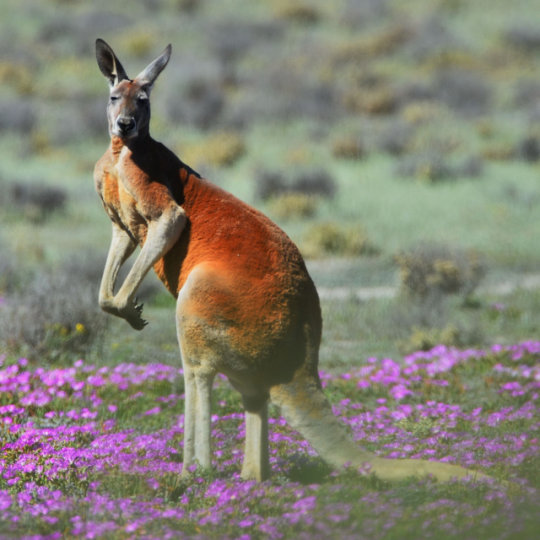
View On WordPress
0 notes
Note
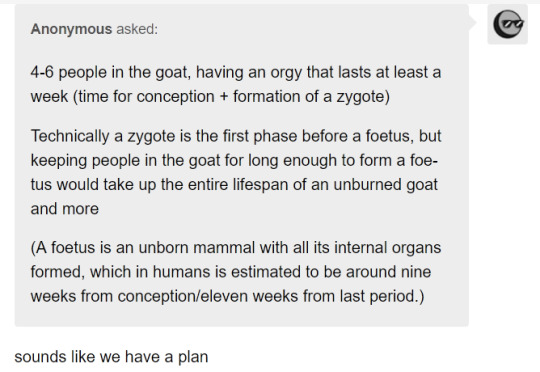
Unfortunately, as Anon 2 points out, it takes 8 weeks for a human fœtus to form, and the goat is only around until new year's assuming it is not set on fire first. Even if you have already infiltrated the goat, a fœtus is simply not achievable in this timeframe. May I suggest a Tammar Wallaby instead? Birth is at 26 days, by which time all organs and tissues have appeared though not matured (the definition of fœtus) and in fact organogenesis is complete before then, with at least one paper [3] using "fœtus" for day 20. This gives you until the 27th of December, leaving four whole days during which to obtain a wallaby.
"But Diplodocus," you might say, "Anon specified that they intend to create a fœtus inside the goat, which implies they are participating in the process by either sex / parthenogenesis (unworkable unless Anon is also a kangaroo), or artificial insemination /IVF (possible but complicated within the limiting confines of a 12.5m goat). Surely this cannot be done."
Aha! Let me introduce you to embryonic diapause, a remarkable feature whereby kangaroos and wallabies can, after fertilisation, hit pause and hold a viable embryo of 70-100 cells (blastocyst) in the uterus until the current joey exits the pouch, at which point development will resume. Manual removal of the pouch young (fœtus or joey) can therefore be said to create a fœtus, and so, Anon: all you need is a pregnant, carrying kangaroo, and perhaps a helmet.
Just in case.
References (all links are free-access excepting Google Books, where some pages are not available):
Dawson, T. J. (1995). Kangaroos : biology of the largest marsupials. Unsw Press.
Dawson, T. et al. (1989). 17. Morphology and Physiology of the Metatheria. In Fauna of Australia / 1B, Mammalia / vol. eds.: Dan W. Walton. Australian Government Publ. Service.
Drews, B. et al. (2013). Ultrasonography of wallaby prenatal development shows that the climb to the pouch begins in utero. Sci Rep., 3. https://doi.org/10.1038/srep01458
Jirik, K. (n.d.). LibGuides: Red Kangaroo (Marcopus rufus) Fact Sheet: Reproduction & Development. San Diego Zoo Wildlife Alliance Library
Kangaroo Development - Embryology. (2024). Unsw.edu.au.
Renfree, M. B., & Tyndale-Biscoe, C. H. (1973). Intrauterine development after diapause in the marsupial Macropus eugenii. Dev Biol., 32(1), 28–40. https://doi.org/10.1016/0012-1606(73)90217-0
Im going to create a fetus inside the giant wooden goat
by yourself????
#and if the jackdaws eat the goat the kangaroo will be fine#<-- sentence nobody has ever made before#hasgavlebockenburneddownyet#animals#marsupialia#kangaroos & wallabies#tumblr memes#images have alt text
234 notes
·
View notes
Text
Transgendered or intersexual individuals of various types are also found in several species, including Red Kangaroos, Euros (Macropus robustus), Tammar Wallabies (Macropus eugenii), and Quokkas (Setonix brachyurus). Some of these individuals have female body proportions and external genitalia, female or combined male-female internal reproductive organs, a scrotum, and absence of a pouch and mammary glands. Others have male reproductive organs, intermediate or female body proportions, and a pouch and mammary glands.
"Biological Exuberance: Animal Homosexuality and Natural Diversity" - Bruce Bagemihl
#book quote#biological exuberance#bruce bagemihl#nonfiction#transgender#intersex#red kangaroo#macropus rufus#euro#wallaroo#macropus robustus#tammar wallaby#macropus eugenii#quokka#setonix brachyurus#reproductive organs
2 notes
·
View notes
Photo

Red kangaroo (Macropus rufus) at Coral Bay in Australia
Marc Russo
40 notes
·
View notes
Photo

1986 Australian Animals https://www.stampworld.com/stamps/Australia/Postage-stamps/g0990//
#1986 stamps#Australian Animals#lcstampswishlist#lcstamps#Australia Post#Australia stamps#Macropus rufus#Dromaius novaehollandiae#Phascolarctos cinereos#Dacelo novaeguineae#Koala#Emu#kangaroo#kookaburra#platypus#fauna stamps
3 notes
·
View notes
Photo

Red kangaroo (Macropus rufus)
Photo by Lone Pine Koala Sanctuary
#red kangaroo#kangaroo#macropus rufus#macropus#macropodinae#macropodidae#macropodoidea#macropodiformes#diprodontia#australidelphia#marsupialia#metatheria#mammalia#tetrapoda#vertebrata#chordata#captive animal
3 notes
·
View notes
Text

Kanguru rosse (Macropus rufus) | Joseph Wolf (1820-1899)
0 notes
Photo

Photo: Clement Tang - flickr
Red Kangaroo
Macropus Rufus
From all species of kangaroos, it is the largest one. It also takes the record as the largest extant marsupials and largest terrestrial mammal native.
Red kangaroo can be found living in central and Western Australia. They like living in desert, grassland and scrubland. They can jump well because they have two forelimbs with small claws and two muscular hind limbs. When they want to stand in upright position, they will use the tail for the tripod.

Photo: urbanmenagerie - flickr


Photo: Sarah H. - flickr


Photos: Clement Tang - flickr

Photo: Peter Rowland - flickr

Photo: Logan Lalonde - I'm Back! - flickr
2 notes
·
View notes
Photo

Red Kangaroo with Color Pencils [Time Lapse]
#Red kangaroo#kangaroos#animals#animal#mammals#australia#Macropus rufus#sketch#sketches#sketching#sketchs#draw#drawing#drawings#color#colors#coloring#color pencil#color pencil drawing#how to draw#how to draw and color#how to color#timelapse#timelapse video
2 notes
·
View notes
Photo

The red kangaroo (Macropus rufus) is the largest extant marsupial. 🦘This resident of Australia can weigh as much as 187 pounds (85 kilograms) and reach heights of 5 feet (1.5 meter). It has a muscular tail that can grow up to 3.3 feet (1 meter) long, which the animal uses as a “fifth limb” to push itself forward while walking. Photo: David Cook Wildlife Photography, CC BY-NC 2.0, flickr https://www.instagram.com/p/CMlTKtAgC_t/?igshid=3dfmeivzw5ev
213 notes
·
View notes
Photo
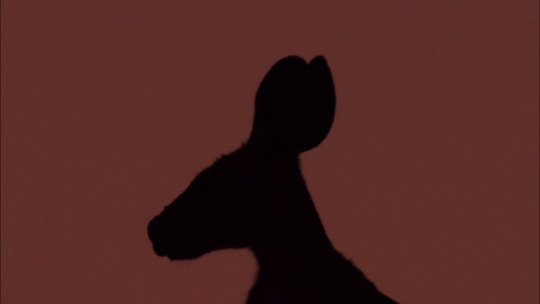
Planet Earth 1x05.
0 notes
Text
Red bigfoot

Macropus rufus - red kangaroo
From Greek makros (”large, long”) + pous (”foot”) and Latin rufus (”red”).
Other bigfoot species include:
giant bigfoot, Macropus giganteus - eastern grey kangaroo
sooty bigfoot, Macropus fuliginosus - western grey kangaroo
nimble bigfoot, Macropus agilus - agile wallaby
image credit: Dan Armbrust on flickr
5 notes
·
View notes